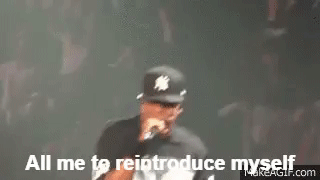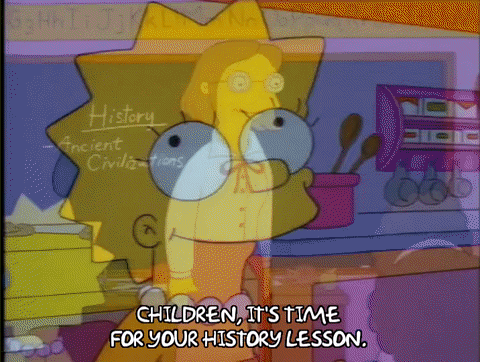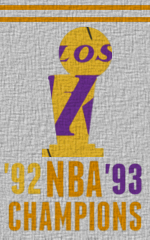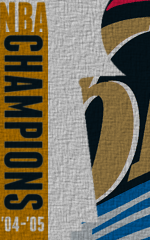'History is always changing behind us, and the past changes a little every time we retell it"- Hilary Mantel
Allow me to Reintroduce Myself

Since the league’s inception, the luxury tax has been one of the most polarizing regulations and penalty sets we’ve created. It’s influence on the league is unmistakable, and continues to serve as a both as a looming figure in team building and a sense of impending doom for teams over the tax and trying to compete. As one of the founding fathers of this league, one of the creators of the tax, and after serving my time in tax jail, I believe I can offer a comprehensive and unique perspective on the luxury tax and potentially offer some solutions on how to fix it. The purpose of this article is to understand the reasoning for the luxury tax, to help identify what we have learned since its inception and potentially come up with some solutions to reformat it. This is meant for discussion, collaboration and learning. I highly encourage people to discuss as we move forward.
A (NOT SO) Brief History Lesson

In the early days of the sim league, things were a lot different. There was a previous version of the sim league we now know and love today, run on an older, more archaic software; and if you know how outdated the current version is, that’s saying a lot. This sim league was based in a forum called hornetsreport (let’s summarize as HR), which was a forum designated for fans of the New Orleans Hornets to meet and talk basketball. To help put this timeframe on history into perspective, this was right around the point of the Hornets winning the #1 overall pick and selecting Anthony Davis. Enthusiasm for basketball in New Orleans was at an all-time high, and everyone had an opinion on the right way to build around Anthony Davis to make this franchise relevant.
(Side note: it’s interesting looking back at some of those conversations and history as we know it today. It’s really sad to realize how poorly the Anthony Davis Era ended considering the excitement around him, and how the fanbase’s morale has turned. It’s also very interesting on how quickly history repeats itself in the NBA as the same fanbase moves on from AD to Zion, much the same way it moved from CP3 to AD).
The only outlets for fans to give their opinion or give example of how to run a franchise were video games or through a forum, which is still pretty consistent with today. Forums ended up with petty back and forth between users with no way to prove strategic basketball prowess. However, video game offered an outlet where there was measurable success. Basketball videogame franchises like NBA2k were not the mostly monotonizing enterprises we know today but were focused on creating a realistic immersive experience and offered franchise modes. The draw back though was there was not a lot of infrastructure to support 30 players, you had to be on at the same time to make things work, and there was an element on stick skills. Rarely could you get 30 people to play more than a few games, much less multiple seasons. There was an alternate that allowed you to play at flexible times, and would allow you would be able to run a franchise without additional oversight. This option was simulation basketball.
The previous iteration of sim league has a lot of commonalities between it and the early version of this sim league: there was competition, there was the excitement of the unknown and there were fierce rivalries in this league. As you can see from the explanation from the timeframe above, people were just completely bought into the sport and wanted a taste. Sim league expanded from Hornets’ fans only, to friends of friends which brought a variety of other team’s fanbases, and for awhile it seemed like it could not be stopped. Eventually, the dark days of that league began. The first signs of cracks in the foundation was with the commissioner, who became wildly inconsistent posting results of scheduled sim league actions (think free agency and Training camps) and games.
To make matters worse, he was as poor of a communicator as anyone could be. His excuses would range from 'he was doing this for fun, not a job' to him having to spend ‘damn near $500 on a computer’. This communication usually came days to weeks after the fact, leaving the league to wonder if there was still a sim league. To add to this, the commissioner was also very suspect with his teams. Whether the player was a free agent or the 18th pick of the draft, players who joined his team received boots almost immediately. An example is Erik Barkley being a top 5 PG in that league. Rumblings and not so veiled accusations of cheating were starting to get louder by the day. All of these factors contributed to an eruption of discontent, and this very active and successful sim league was doomed to fail due to lack of clarity, and poor management. A few folks saw the writing on the wall and were tired of the mismanagement and wanted to form a sim league based off transparency and fairness. That is how the (PBSL) People’s Basketball Sim League was formed.
A NEW HOPE

This new league had much more hope than before. Again, the league was full of ambitious GMs looking to prove themselves and show their strategic prowess. The fertile grounds of competition provided the perfect conditions for rivalries to bud like flowers in spring. Winning divisions were accompanied by banners, while championships were celebrated like a job promotion. The difference though, was the foundation of this league did not rest on one person, but a group of people. Now, I know what you’ re thinking: This would be a natural segway for me to jump into the inner politics of the ‘Shadow Council’ and a lot of other topics; but for the purposes of this article, I’ll leave that alone. For now, think of this group as a oligarchy more than a tyranny style of leadership.
Part of the creation of this league was to find issues in the game and come up with solutions to fix it. Most of the issues from the league stemmed from the programming not being robust enough to handle the complexity that a league like this created. Another issue that was heavily watched was the ambition to create a competitively balanced league that gave everyone a fair shot if they worked hard enough. A lot of the current elements in the game that we play today stem from the creation of this ruleset that was originated during the HR league and this foundational period. For example, player training was around during the initial run of the HR, but it was edited to allow GMs to be able to have a little more control over their players futures. Updates to when, how, and who you could train were carefully considered and argued to come up with the framework of the system we see today. There were restrictions put in place to make sure one player became too powerful and sim league currency (we will refer to this as ‘points’ moving forward) would hold value overtime.
What's the Point?

I use the example of player trainings because it provides one of a few uses for the sim league currency, which will be the genesis of our topic moving forward. It also gives you an insight into some of the basic economics on how points had and kept value over time, how they points were used, and how we got to where we are today. You see, points previously were throw-ins in deals and the new league oligarchy wanted to make points a living breathing sim league economy. Points could (and can) be used in several ways: via trade, player trainings, and later as an insurance policy for TC. Only trading allowed for the circulation for the currency, where trainings and insurance policies would extinguish the points from circulation.
There were only two ways to create new points: Team/Player achievements and Article submission. With this understanding, you can see that points and a league economy weren’t only created to have mechanism in the league for teams to manage, but it was for a much more primal reason: the survival of the league. The theory was, an active league is a healthy league. By allowing team/player success and league activity be the factor in creating points, you could have some control over your teams success. This also would help give an advantage to people who wanted to win more; team managers could outwork the competition. This, of course, came with brackets of point earning limits so someone couldn’t poop sock (definition #3) articles and create the 5th wonder of the world (Boban). I know you may be looking at our sim league today and may be thinking that we have these systems in place now and not many are using it. I’ll point back to the reference to the time period we were in. Sim articles, Press conferences, and podcasts were a standard not the exception for GMs that wanted to compete. Leaving points on the table was not an option for some GMs.
The Luxury Tax

So now we have an outlook on how we got here, now we need to discuss how the luxury tax came about. To do that, you must understand some dynamics of the sim league. I’m going to make some assumptions on your basic understanding of the NBA and even sim league because you’re probably not reading this article unless you’re already in the league. There’s a dynamic salary cap that restricts you from signing players over the league specified amount. There are bird years which allow you to sign a guy to re-sign after playing for 4 years over that cap to allow a team to have player retention. So, what’s to stop the league (NBA or Sim) from becoming an arms race and just signing everyone to max contracts you want to keep?
The real NBA has some additional considerations that sim league didn’t have to factor in. This wasn’t made up money being spent, and owners and teams could lose money and bankrupt the team if they employed this strategy. This still gave an advantage to more profitable teams though and they could basically just take poorer franchises players through sheer financial power. The NBA’s (overly-simplified by me) response was an additional fee for going over a certain amount to try and level the playing field between the affluent teams and the smaller markets. This gives fans hope to support all the franchises the guise of it being a competitive league. We’ve learned over the years that this isn’t as full proof as it was intended, but it certainly was a step in a positive direction.
Sim league was a little different though, there were no real monetary restrictions in place to do this. You can’t get fired, you can’t go bankrupt, there are no markets, and who cares about fans? So how do you enforce fiscal responsibility in a fake money fun league that was founded on transparency, competition and strategy? Let me introduce you to the sim league luxury tax. The luxury tax was built on the foundation of the NBA luxury tax with some modified elements. There were two major modifications that you could point out in the sim league system that were the bones to the luxury tax, and both were built off escalations. One was the escalating tier system for how much over a team was over the salary cap. This was the don’t be an asshole clause. The dynamics behind this was, for every bracket range you went over the tax, the penalty increased. For instance, if you were 10 million over the cap, you may owe 10 points, but if you were 30 million over the point total the tax amount may look like 45 points. Basically, it was a stop put in place for teams to not get overly extravagant for a 1-year run. The second major change was for the duration a team spent in the luxury tax. Let’s use the above example again but pivot it to this rule. If a team was 10 million over the cap in year 1, they may owe 10 points, but in year four if they’re 10 million over it may be 45 points. I think you can see together how cumbersome this could be to a team if you were multiple brackets above the cap as a 3 year repeater. The repeater clause was created for a variety of reasons, but unlike the ‘don’t be an asshole’ rule above, this was meant to be the dynasty stopper.
The Teeth of the tax

Now take what we talked about with sim points being spent on fun things like trades and player trainings and now we add a more punitive dynamic into the mix and we have a fully functioning economy in sim league. I want you to think of a computer. Its basic components are a monitor, a keyboard, a mouse and the computer itself. None of these parts alone really mean much and, without all these devices working together it doesn’t function properly. That’s how I’d like you to picture the point’s system, training, (formerly) insurance, trading and the luxury tax. There was one more nefarious situation that needed to be accounted for that wasn’t through all this planning. What if someone didn’t care about points anymore? What stops them from playing the game differently, forgoing the economy and beating the competition through exploitation without any real consequences? The classic question of, “what are you going to do about it if I do it?”. How do you make the luxury tax have teeth for teams that don’t follow the intended norms and intended bounds of operating responsibly?
To curb this type of action, the league put in restrictions that if you are unable to do many of the things it takes to compete and play in the league until you pay it off. These restrictions include (and are not limited to): not being able to train players, not being able to send points in a trade, losing the ability to have RFA rights, losing the ability to sign a player over a min contract, and losing the ability to resign your bird right’s players. This is the heart of the conversation of this article. These restrictions can be considered punitive, harsh, extreme, and even radical. These words are rarely associated with positive feelings and certainly aren’t something people want to impose on themselves, but this was intentional. They were so harsh for the intention of no one ever getting themselves to the point of not being able to pay the tax or take on too much of a burden. They were intended to make sure the tax was never challenged.
In the Next Episode of ‘The Taxman Cometh’

What if I told you they were not only going to be challenged, but they’d be challenged by two of the very people who helped with the framework of the tax? What if I told you it would make ope of them question everything about the tax and how it worked after going through it? That will be on the next episode of ‘The Taxman Cometh’!






